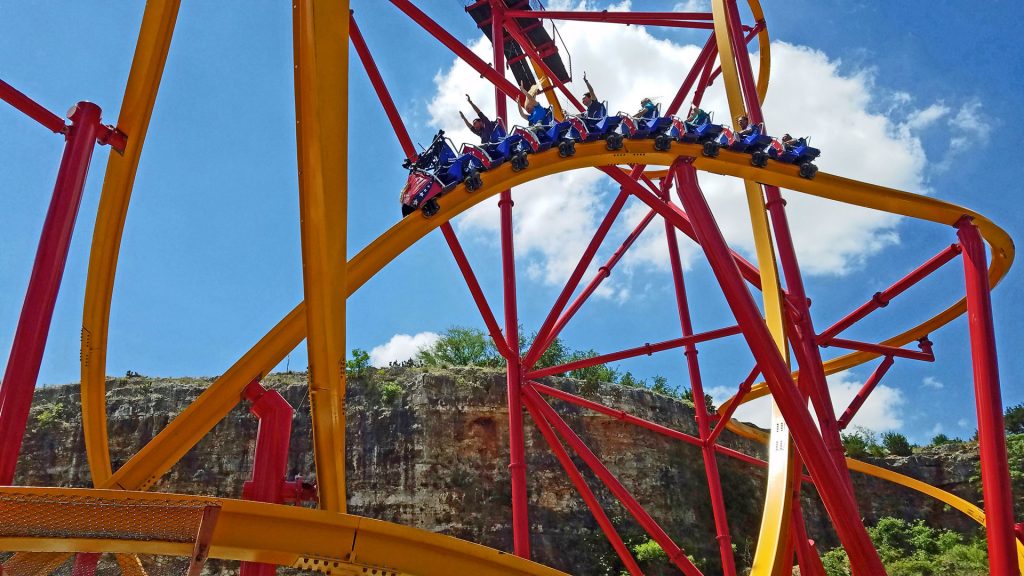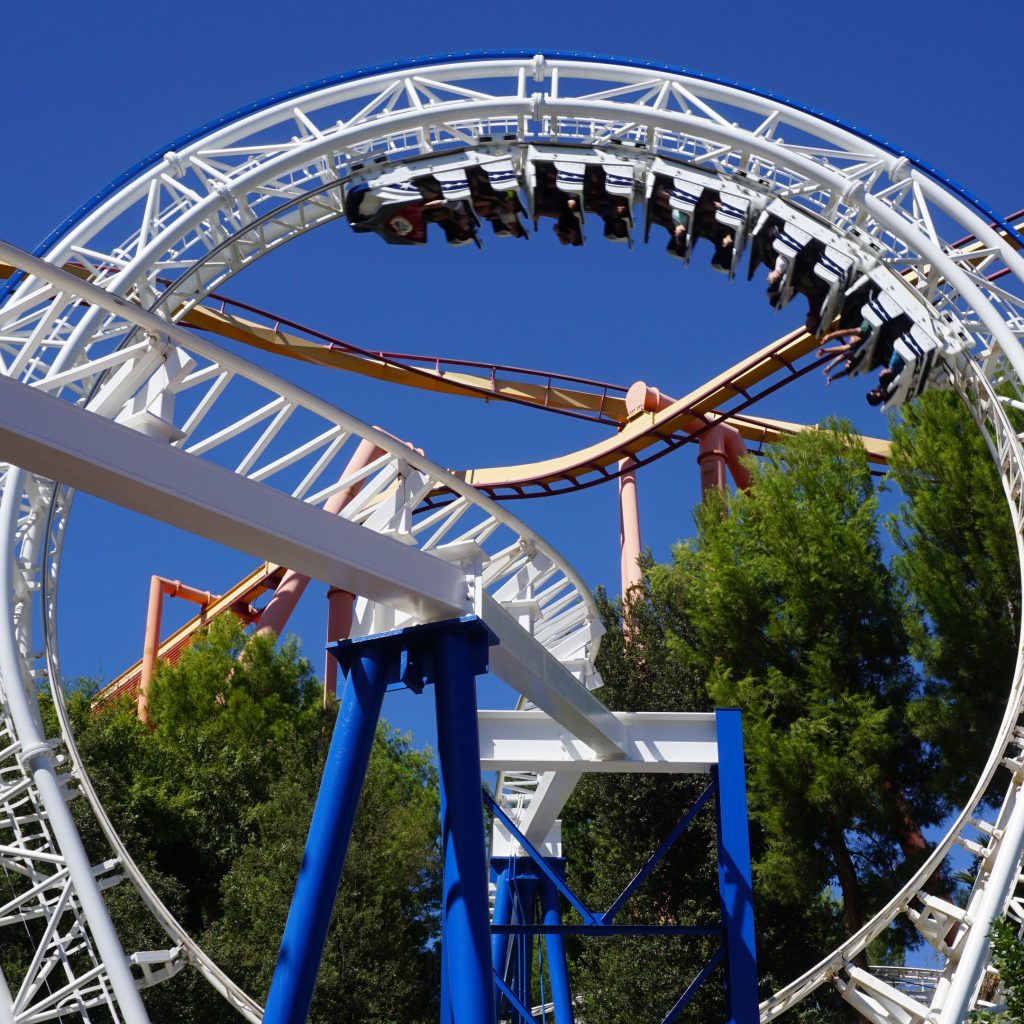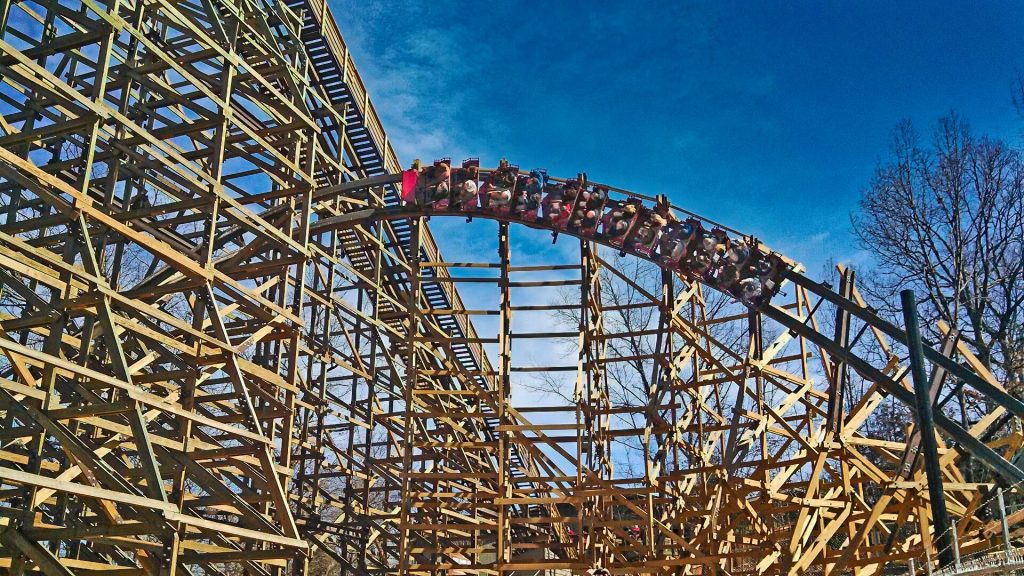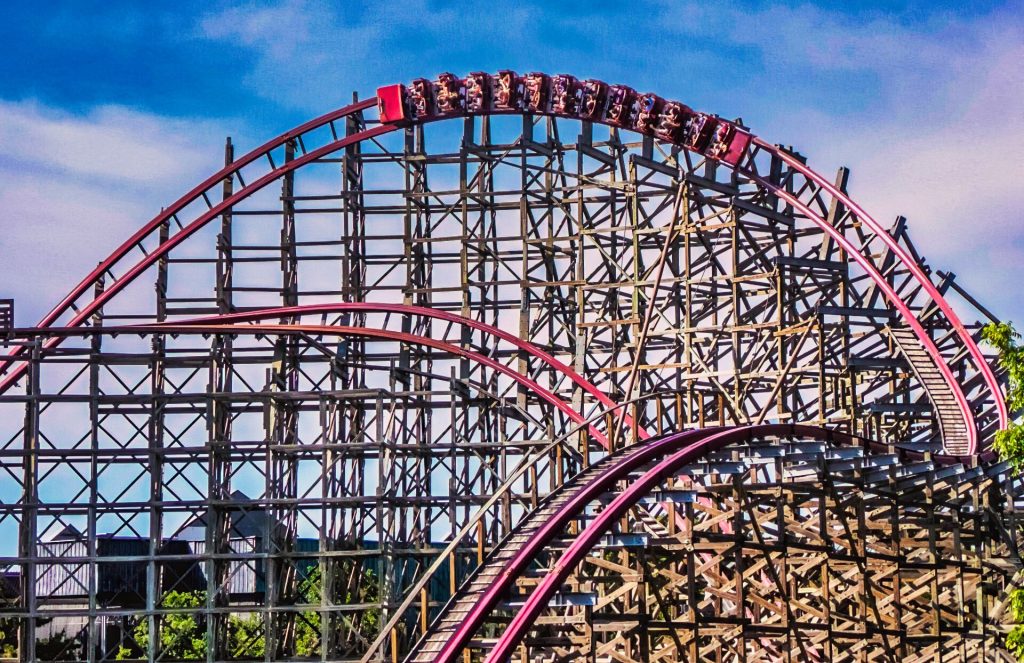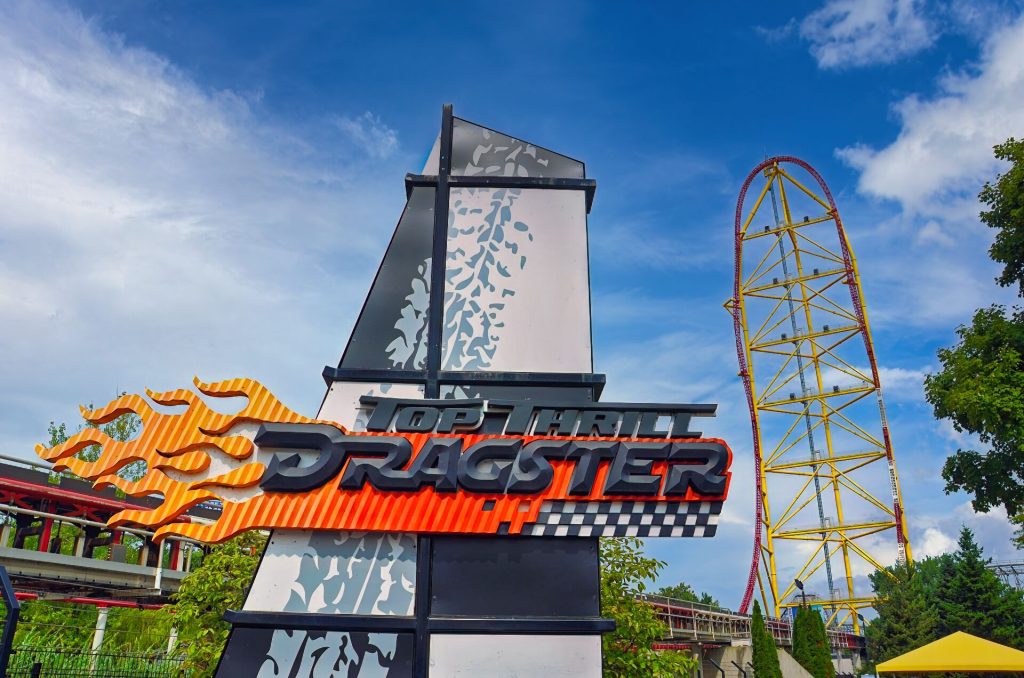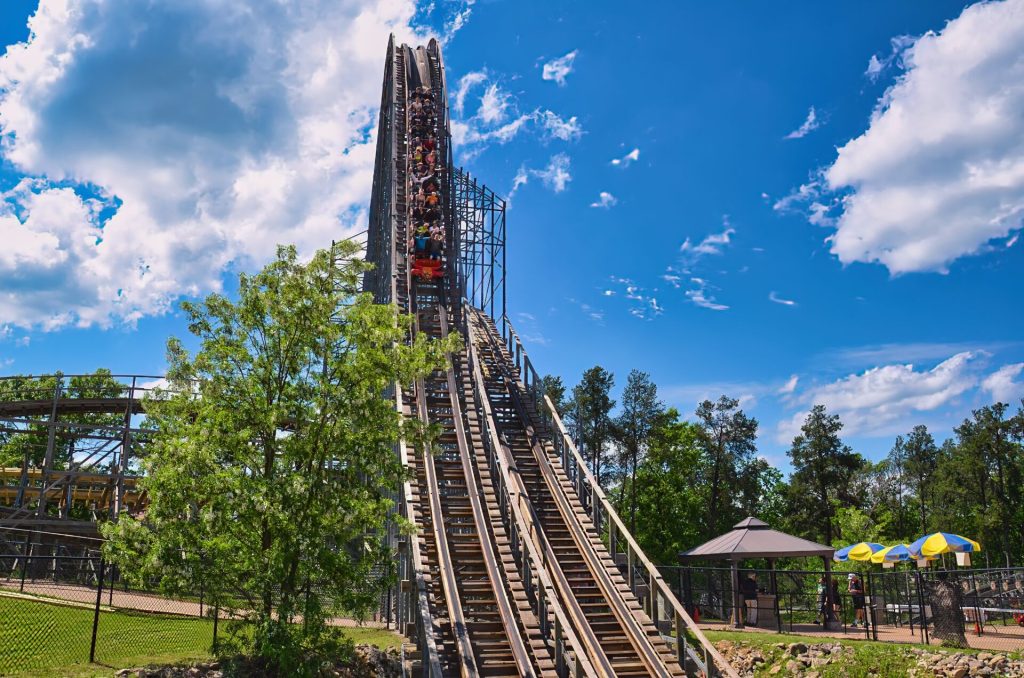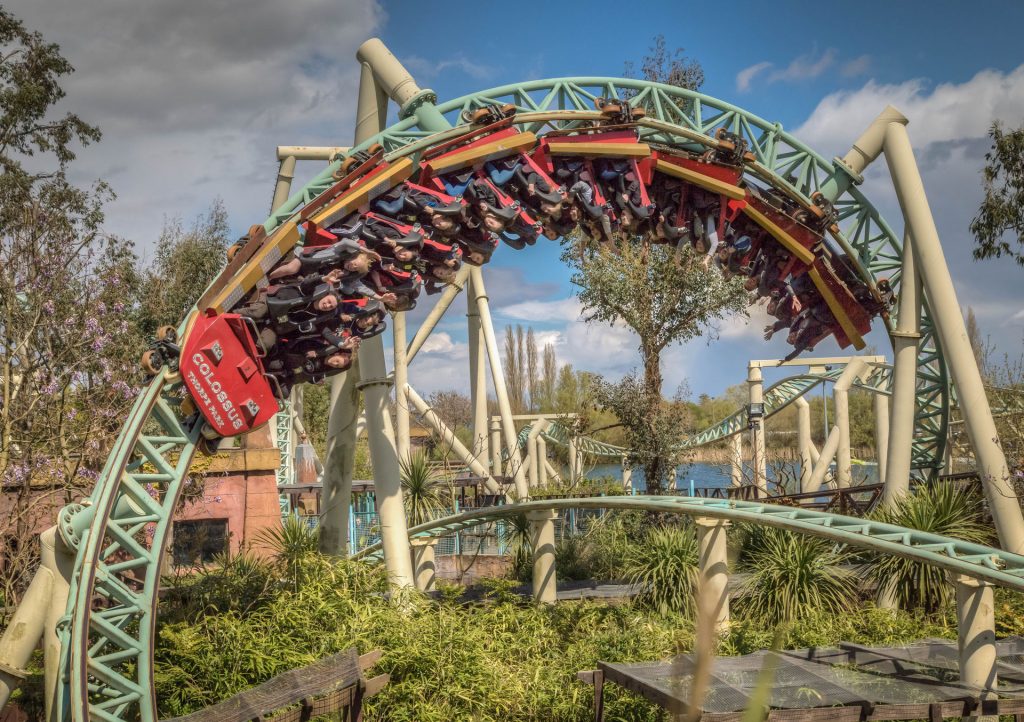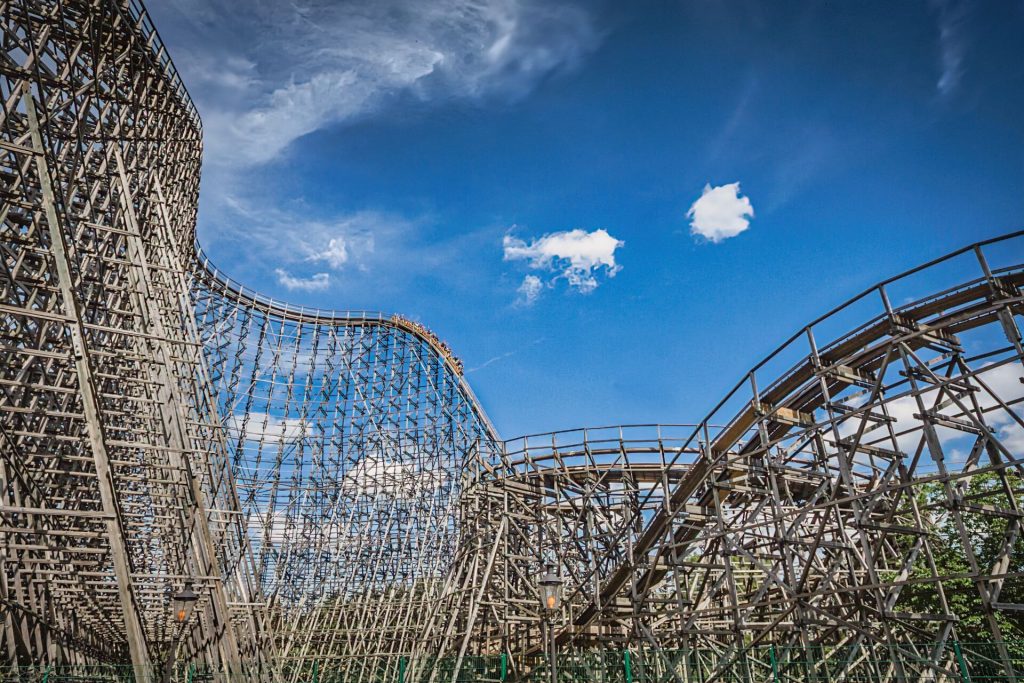From humble beginnings to dominating modern theme park skylines, roller coasters are steeped with a rich history of technical advancements. Here’s a timeline of many highlights that influenced the development of roller coasters throughout the years.
Rocky Mountain Construction first revealed their new single rail roller coaster concept exclusively to CoasterForce in 2015 and three years later they debuted their first “Raptor Track” coaster with the opening of Wonder Woman Golden Lasso Coaster on May 12, 2018 at Six Flags Fiesta Texas in the USA.
While Virtual Reality had been tested on roller coasters prior, the New Revolution Virtual Reality Coaster at Six Flags Magic Mountain in California, USA, opened in 2016 as the first to fully feature VR on board in part as celebration of the coaster’s 50th anniversary.
Rocky Mountain Construction was contracted by several companies to construct roller coasters and parks to improve existing ones, but with the opening of Outlaw Run on March 15, 2013 at Silver Dollar City in Missouri, USA, they showed they could design and build top rated coasters from the ground up.
In 2010 RMC was contracted by Six Flags Over Texas, USA, to convert the classic Texas Giant wooden roller coaster to an all-new steel track design, which reopened on April 22, 2011 as the New Texas Giant, featuring steeper drops and added elements.
Although Intamin was first to the punch in 2007 with the one-off Furius Baco at PortAventura Park in Spain, B&M started the wing coaster popularity with the opening of Raptor on April 1, 2011 at Gardaland in Italy.
Standing 420 feet (130m) tall, Top Thrill Dragster opened on May 4, 2003 at Cedar Point in Ohio, USA, as the tallest, fastest full-circuit roller coaster in the world.
The break up of Custom Coasters International in 2002 led to two new wooden roller coaster companies forming, Gravity Group and Great Coasters International (GCI). Both companies have gone on to forge the way for incredible new wooden coaster designs.
Continuing the inversion count record, Intamin debuted Colossus on March 22, 2002 at Thorpe Park in the UK, which featured a world record ten inversions. Colossus has a variety of inversions, including vertical loops, in-line twists, corkscrews, and a cobra roll.
On January 12, 2002 Arrow Dynamics opened X, the world’s first 4th Dimension roller coaster, at Six Flags Magic Mountain in California, USA, which independently flipped rider seats throughout the course of the ride.
Colossus opened on April 13, 2001 at Heide Park in Germany as the world’s tallest wooden roller coaster at nearly 197 feet (60m). With Colossus one of the world’s largest steel coaster companies, Intamin, debuted its “prefabrecated” wooden coaster.
